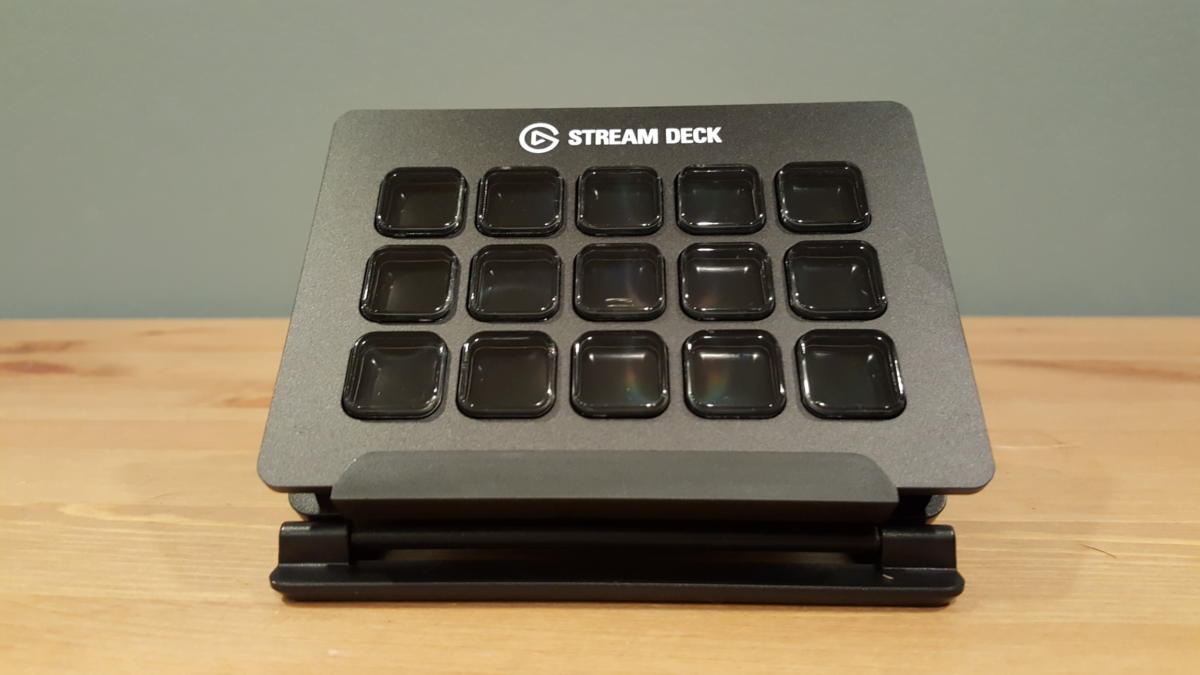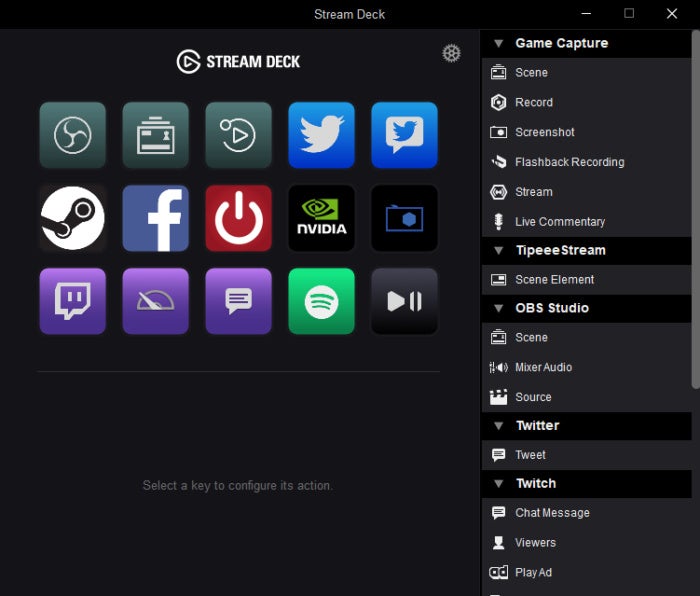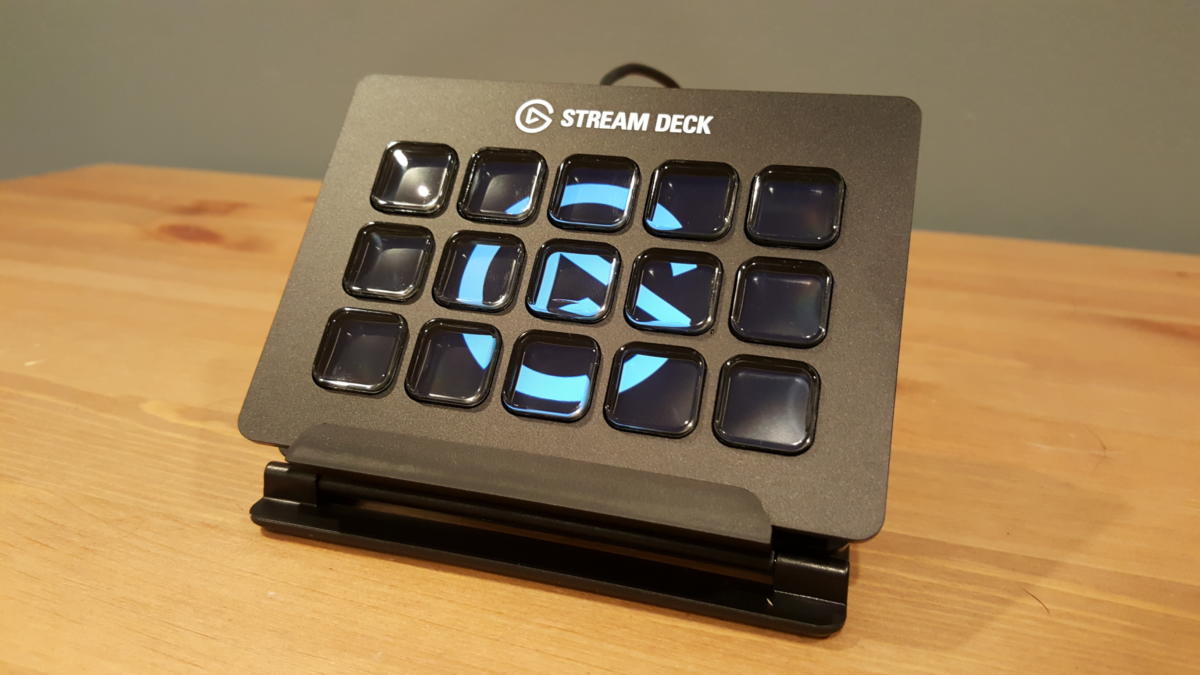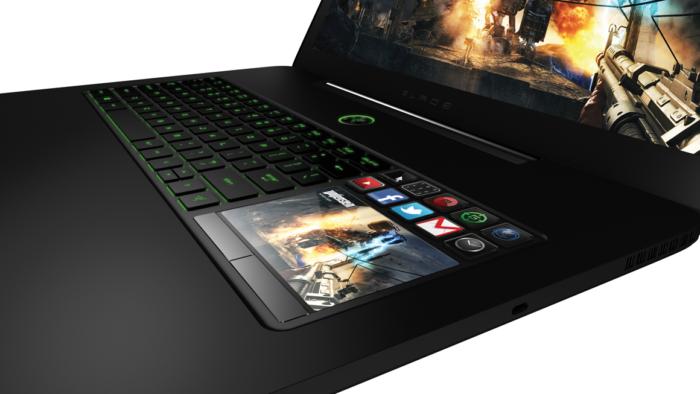Pro-grade equipment at a bargain price. That’s the reputation Elgato earned as first YouTube videos and then Twitch streaming took over video games. Straddling a line between hobbyist and professional-grade—a line that’s hard to walk competently, I might add—Elgato’s capture cards have become a mainstay of streamers at all levels.
The Stream Deck, Elgato’s latest piece of hardware, is something altogether different: A video switcher (or mixer), not a capture card. But aside from some early-days software issues, it’s poised to be just as important a piece of kit for a certain tier of creatives.
Power at your fingertips
Video switchers are a fairly standard (and boring) part of multi-camera broadcasts. If you’ve ever watched a sporting event or another live broadcast, chances are a switcher was employed—it allows a producer to switchbetween multiple camera feeds on the fly, rather than sticking a camera on a tripod and calling it a day. Usually it’s a big gray rectangle full of dials, levers, and color-coded buttons.

IDG / Hayden Dingman
Elgato has taken that concept—the ease of hitting a button and switching camera angles or what have you—and applied it to all aspects of the streaming experience. Basically, the things any streamer does in software right now? The Stream Deck lets you do them in hardware.
Oh, and the whole unit is about the size of a pack of index cards. The Stream Deck consists of 15 buttons, arranged in 3 rows of 5. They could be boring ol’ buttons like any other video switcher, but no. Instead, each is a miniature OLED display.
With software tie-ins to Open Broadcaster Software (OBS), Twitch, Twitter, and more, you can manage an entire stream without ever Alt-Tabbing or pulling focus away from a game. Want to launch OBS? Program a button to launch OBS. Want to start streaming? Hit another and send a stream direct to Twitch. Hell, have another button announce to your Twitter followers that a stream is starting. And if you need to close a game mid-stream and want to full-screen your webcam or do any other fancy scene-switching? Yeah, you can program buttons for that too.

IDG / Hayden Dingman
It’s easy. Setting up the Stream Deck can be a bit of a hassle, probably requiring 45 minutes or an hour to dig through all the options and configure it just so. Add more time if you want to customize the art—Elgato has a web portal where you can create custom 72 x 72-pixel icons for each button, if you (for instance) want to make a collage of Nicolas Cage’s best faces or something.
But at the end you’re left with an incredibly powerful switcher, or at least an incredibly elegant one. I’ve long envied consoles for how easy they’ve made the streaming process—press a button and you’re done. PCs are more powerful, but also more complicated, setting up various scenes and trying to manage them on the fly from the same machine you’re already using to stream.
The Stream Deck brings the PC pretty close to console simplicity, though. Sure, you still need to set up your Stream Deck to make it one-button easy, but Elgato’s software is pretty foolproof and fairly easy to navigate.

IDG / Hayden Dingman
And it can be even more powerful, if you really put time into it. Over and above the built-in hooks Elgato includes to OBS, Twitter, and so on, you can also program buttons to recognize certain global hotkeys. These are essentially glorified macro keys, but it means those who use other streaming software aren’t necessarily out of luck. Nvidia’s Shadowplay, for instance? Alt-F8 is the global hotkey to begin broadcasting. Set a Stream Deck button to Alt-F8, give it a nice Nvidia-related icon, and you’re ready to go.
This isn’t new technology. OLED-equipped buttons have been around for a decade now, but never really found their place. The Optimus keyboard is the most notorious example, where each key was replaced with a separate programmable LCD screen. There was even a smaller 3 x 5-inch version known as the Optimus Aux (though who knows how many were actually sold).
Razer then adapted the idea to the Switchblade, shrinking down the idea for a handheld gaming device (that never came to market). This was then furtheradapted into ten programmable OLED keys on the Blade Pro from 2011 to 2016.

[Source”cnbc”]
